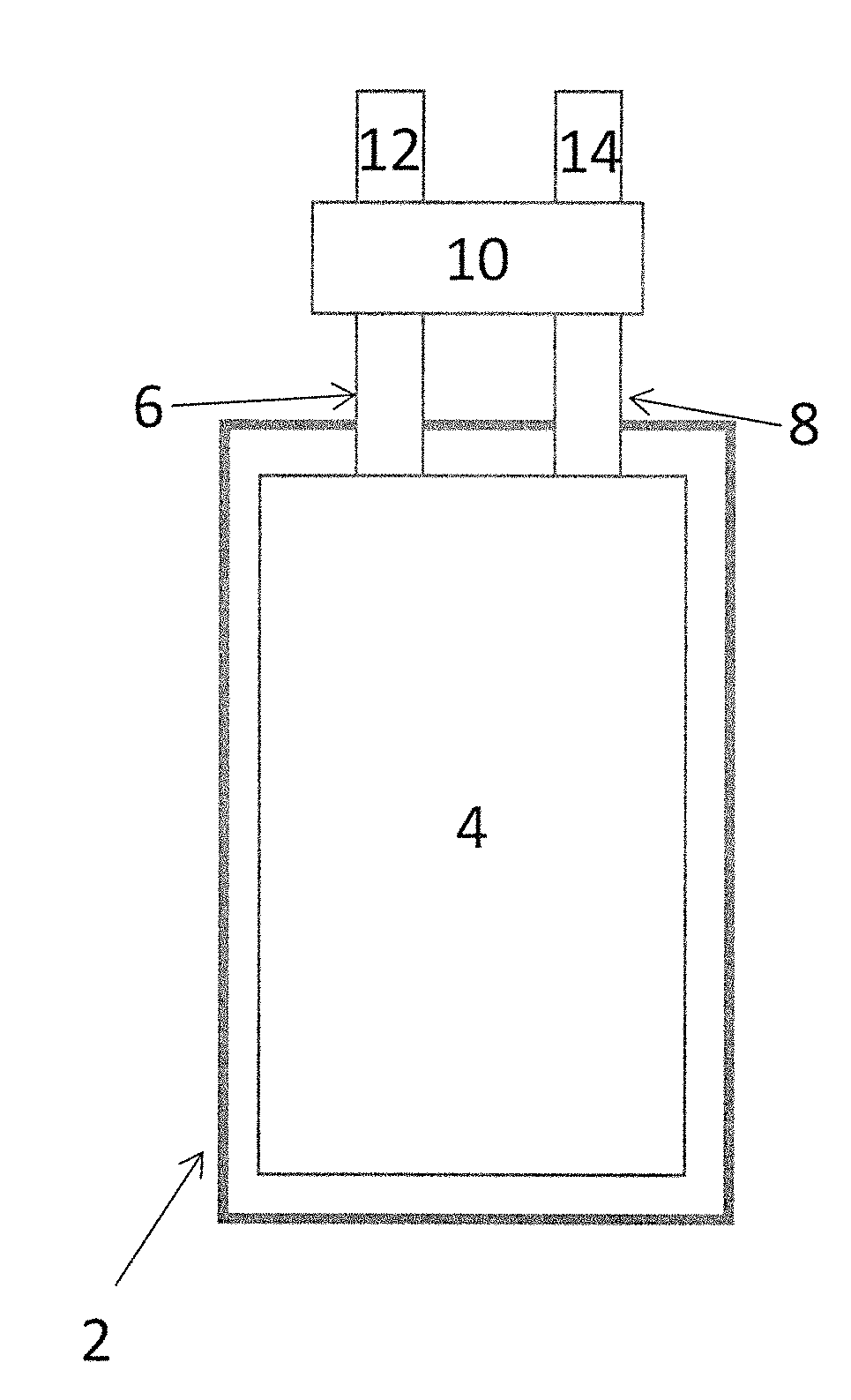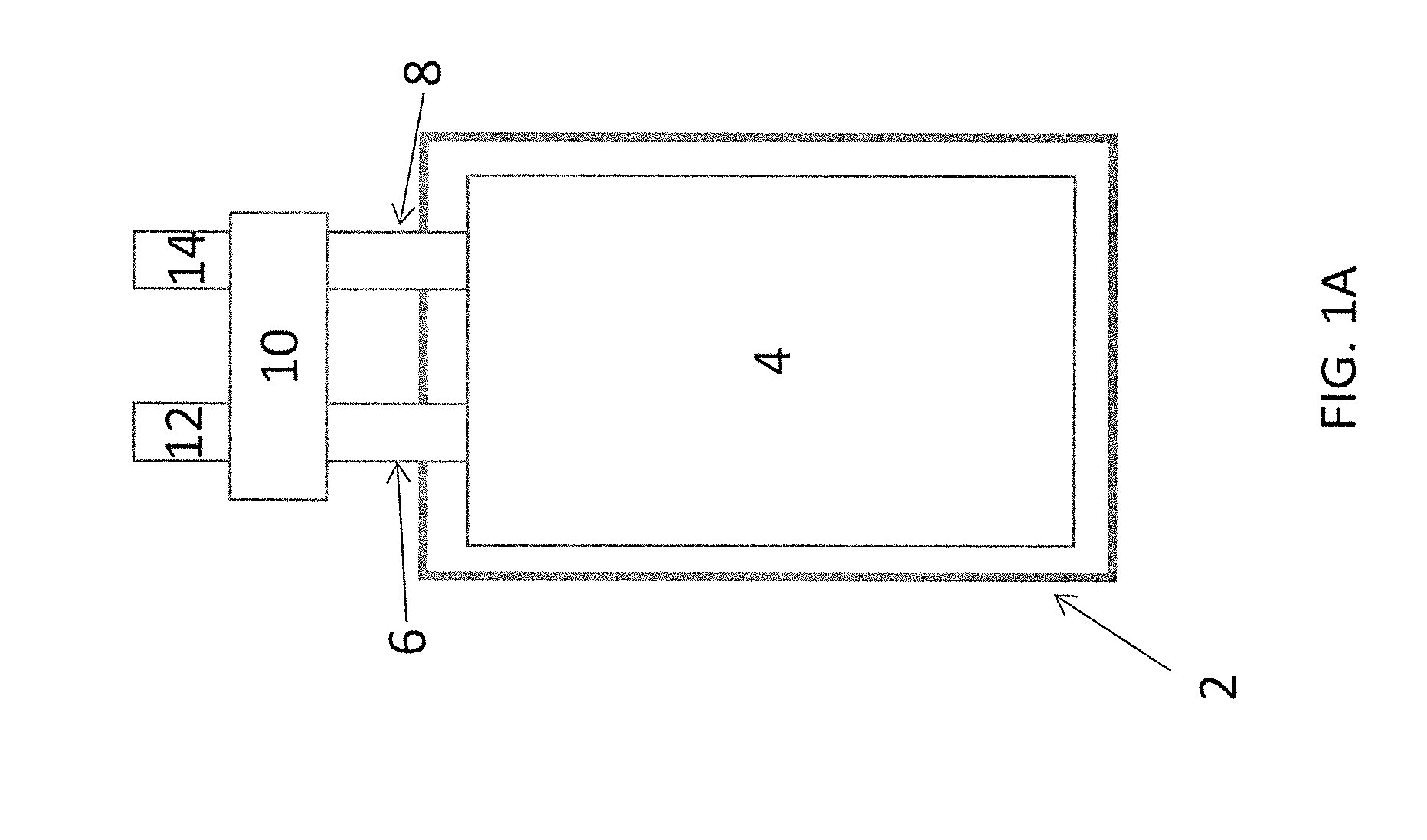Alkaline and non-aqueous proton-conducting pouch-cell batteries
a proton-conducting, alkaline technology, applied in the field of batteries, can solve the problems of excessive weight of the hard shell housing of prior alkaline batteries, affecting the shape and flexibility of the resulting batteries, and requiring hard shell casings or cases
- Summary
- Abstract
- Description
- Claims
- Application Information
AI Technical Summary
Benefits of technology
Problems solved by technology
Method used
Image
Examples
example 1
[0083]An exemplary alkaline pouch-cell battery was constructed using electrodes with electrode dimensions of 2 cm×2 cm. The positive electrode was formed of 80% Ni(OH)2 and 20% graphite-PTFE mixture (TAB 2) formed as a dry mixture and layered onto a nickel screen an electrode substrate. The negative electrode was an AB5 type alloy including as designed in atomic percentages of La (10.5), Ce (4.3), Pr (0.5), Nd (1.4) Ni (60.0), Co (12.7), Mn (5.9), and Al (4.7). Methods of formation and testing of the negative electrode material is described in Young, et al., J Alloys Cpds, 2014; 585:760-770. The negative electrode active material is formed by combining the raw materials and subjecting the raw ingots to induction melting in an argon atmosphere in a MgO crucible. The ingots were annealed at in vacuum (1×10−8 torr) at 960° C. for 10 h. The negative electrode material was analyzed for gaseous phase hydrogen storage characteristics using a Suzuki-Shokan multi-channel pressure-concentrati...
example 2
[0089]A secondary alkaline pouch-cell is formed as in Example 1 using a second set of electrode active material types. The pasted positive electrode is composed of active material of N83Co12Zn5(OH)2 and additives of 5% Co, 6% Co(OH)2, and 3% PVA on nickel foam substrate with thickness of approximately 0.7 mm. The negative electrode was about 70 mg of La10.0Ce5.0Ni68.7Co4.7Mn4.3Al5.6Cu1.2Zr0.2Si0.3 metal hydride alloy powder prepared by induction melting as per Example 1 and compacted onto an expanded nickel substrate with a 10-ton press to form the negative working electrode, approximately 0.2 mm in thickness, without any binder. The plateau pressure of this alloy is 0.61 atm. The resulting N / P ratio of 1.2 was used to calculate the amount of positive active material is used against the negative electrode active material. The resulting positive and negative electrodes were assembled into pouch-cell configurations as was done in Example 1. The capacity obtained in the first seven cyc...
PUM
 Login to View More
Login to View More Abstract
Description
Claims
Application Information
 Login to View More
Login to View More - R&D
- Intellectual Property
- Life Sciences
- Materials
- Tech Scout
- Unparalleled Data Quality
- Higher Quality Content
- 60% Fewer Hallucinations
Browse by: Latest US Patents, China's latest patents, Technical Efficacy Thesaurus, Application Domain, Technology Topic, Popular Technical Reports.
© 2025 PatSnap. All rights reserved.Legal|Privacy policy|Modern Slavery Act Transparency Statement|Sitemap|About US| Contact US: help@patsnap.com



